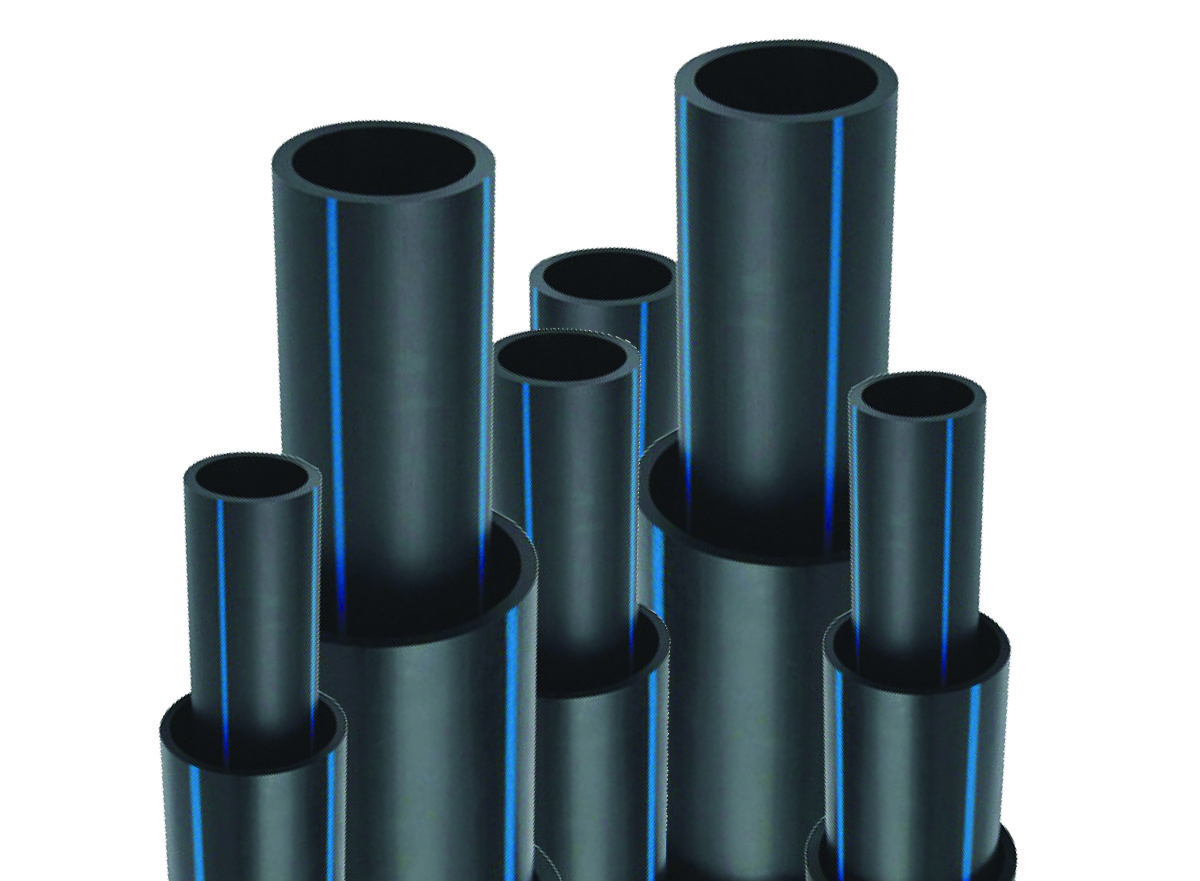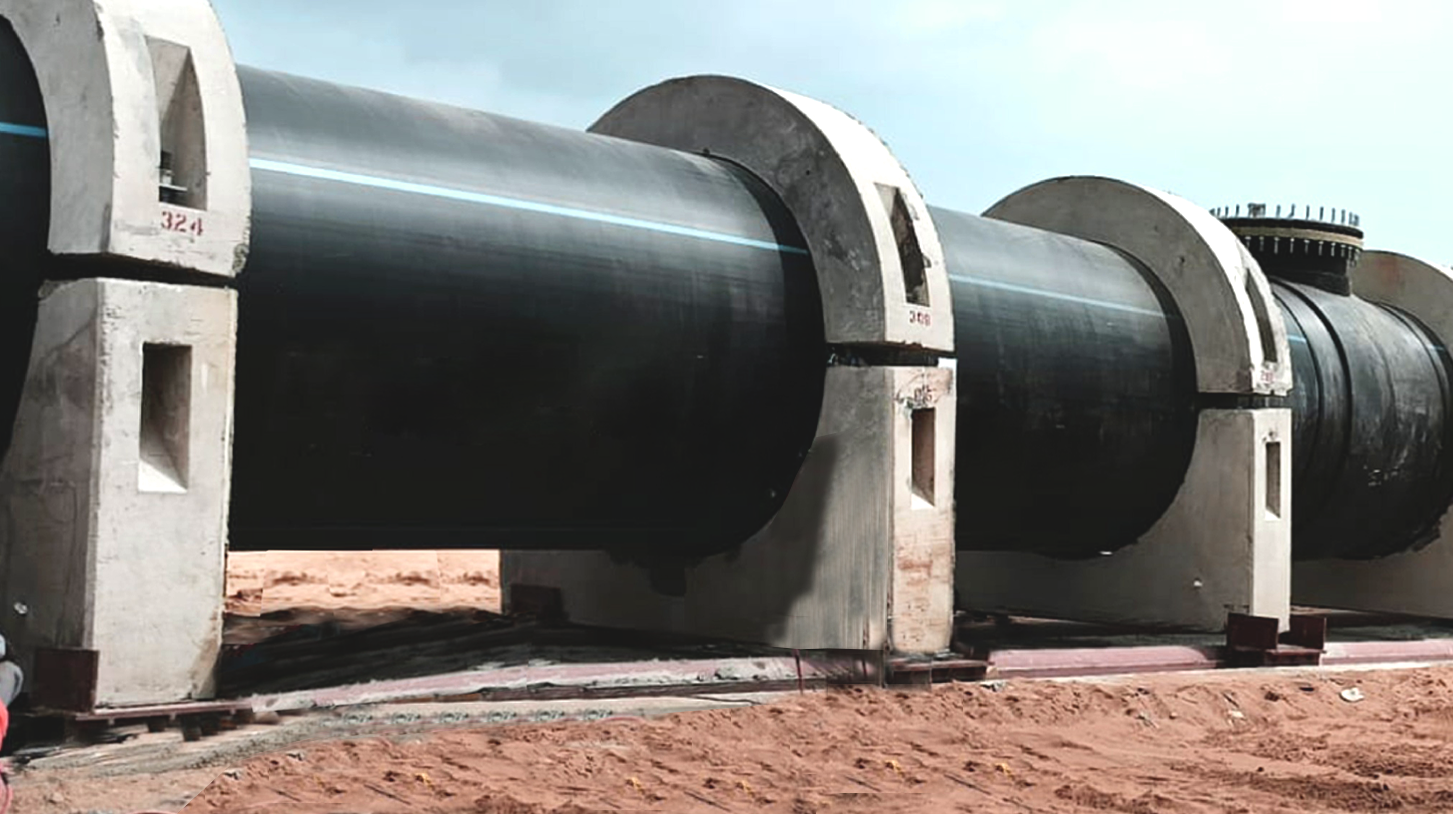Explore the Manufacturing Refine Behind High-Quality HDPE Pipe and Its Applications
The manufacturing process of high-grade HDPE pipes is elaborate and systematic. It starts with the option of basic materials that boost performance. Following this, ethylene undergoes polymerization to form material, which is then shaped via extrusion. Quality assurance is vital, guaranteeing that the last item fulfills stringent standards. Nevertheless, the journey of HDPE pipes does not finish with production. Their applications throughout various industries reveal a wider value worth checking out.
Recognizing HDPE: Features and Advantages

High-density polyethylene (HDPE) is a flexible polycarbonate understood for its resilience and resistance to different environmental factors. This material exhibits exceptional tensile stamina, making it appropriate for requiring applications. Its low-density structure adds to a light-weight product, helping with convenience of taking care of and setup. HDPE additionally showcases amazing resistance to chemicals, which lessens destruction when subjected to extreme compounds.
The material's reduced moisture absorption further enhances its long life, making it optimal for use in pipes and storage space tanks. Furthermore, HDPE is immune to ultraviolet (UV) radiation, making certain that items preserve their stability even when revealed to sunshine. Its flexibility permits for the development of intricate shapes without compromising toughness. The environment-friendly nature of HDPE, often originated from recycled materials, includes in its allure, advertising lasting techniques in manufacturing. On the whole, these buildings and benefits make HDPE a recommended choice for various commercial and customer applications.
Raw Product Selection for HDPE Manufacturing
The option of basic materials for HDPE manufacturing is vital to confirm the last product fulfills the preferred specifications and high quality criteria. High-density polyethylene (HDPE) is primarily produced from polymerized ethylene, originated from nonrenewable fuel sources such as all-natural gas or unrefined oil. The quality of these feedstocks substantially influences the mechanical and thermal buildings of the final HDPE.
Additives likewise play a significant duty in enhancing HDPE's performance, consisting of antioxidants, UV stabilizers, and colorants, which boost toughness and resistance to environmental elements. The selection procedure must think about not only the chemical composition of the raw products however additionally their handling attributes to guarantee efficient manufacturing.
In addition, the sourcing of resources need to focus on sustainability and conformity with environmental regulations, as liable practices are critical in today's market. Ultimately, careful raw product choice lays the structure for creating top quality HDPE pipes ideal for varied applications.
The Extrusion Process: Shaping HDPE Pipe
The extrusion process plays an important function in shaping HDPE pipes, starting with careful product preparation techniques that guarantee perfect flow and uniformity. Just as vital is the layout of the die, which directly affects the final measurements and surface high quality of the pipeline. Together, these variables contribute considerably to the effectiveness and high quality of HDPE pipeline production.
Product Prep Work Strategies
Reliable production of HDPE pipes begins with precise material prep work strategies, particularly the extrusion process. Throughout this stage, high-density polyethylene material is initial dried to get rid of moisture, making sure perfect circulation qualities. The resin is then fed right into the extruder, where it undertakes home heating and melting, transforming into a thick state. This home heating procedure is very carefully regulated to keep the material's integrity and performance. The liquified HDPE is compelled with a die, forming it right into a continual pipe type. Appropriate temperature management during extrusion is important, as it directly influences the product's properties and the end product high quality. When shaped, the HDPE pipe is cooled and reduced to specified lengths, all set for subsequent handling and applications.
Die Style Value
Precision in die style plays a vital role in the extrusion procedure of HDPE pipelines. The die acts as the last shaping tool, straight influencing the pipe's dimensions, wall surface thickness, and surface coating. A well-designed die warranties uniform product flow, reducing issues such as irregularities and weak spots. The geometry of the die have to be enhanced to accommodate the certain homes of HDPE, including its thickness and thermal actions during extrusion. In addition, the cooling rate of the product as it passes via the die can significantly impact the pipe's architectural honesty. Investing in advanced die innovation is essential for manufacturers intending to generate top notch HDPE pipelines that satisfy sector criteria and customer assumptions.
Quality Assurance Actions in HDPE Manufacturing
Although numerous factors influence the quality of HDPE pipe manufacturing, efficient quality assurance measures are essential to ensure consistency and dependability in the end product. Key quality assurance practices include rigorous product examination, validating that the raw polyethylene fulfills established criteria for pureness and density. During the extrusion process, specifications such as temperature, stress, and cooling time are carefully checked to keep dimensional precision and structural honesty
In enhancement, post-production testing is necessary; makers typically carry out hydrostatic tests to evaluate the pipeline's stamina and resistance to pressure. Aesthetic examinations for surface area problems further boost quality control. Certification from pertinent requirements companies, like ASTM or ISO, gives an extra layer of trustworthiness. By executing these complete quality assurance procedures, producers can decrease issues, improve efficiency, and ensure that the HDPE pipes fulfill the details requirements of different applications, ultimately resulting in customer satisfaction and count on the item.
Applications of HDPE Pipe Across Industries
HDPE pipelines are utilized across different sectors as a result of their toughness and versatility. In water circulation systems, they assure effective delivery, while in wastewater management, they supply trusted options for waste transport. Additionally, farming watering networks gain from HDPE's resistance to deterioration and versatility, making it an excellent choice for modern farming practices.

Water Distribution Equipments
A considerable variety of sectors count on high-density polyethylene (HDPE) pipelines for efficient water distribution systems. Understood for their longevity and resistance to corrosion, HDPE pipes are extensively made use of in community water system networks, farming irrigation, and industrial applications. Their lightweight nature assists in very easy handling and installment, decreasing labor expenses and time. Furthermore, HDPE pipelines can suit various pressure levels, making them suitable for both low and high-pressure systems. hdpe pipe fittings Midland TX. The versatility of the product enables seamless combination into existing facilities, lessening the requirement for substantial excavation. HDPE's resistance to chemical seeping warranties that the water delivered stays secure and clean, making it a suitable option for keeping the quality of potable water across numerous industries.
Wastewater Monitoring Solutions
Effective water circulation systems additionally lead the way for ingenious wastewater administration remedies, where high-density polyethylene (HDPE) pipelines play a considerable role. Popular for their durability and resistance to corrosion, HDPE pipes are optimal for carrying wastewater in numerous setups. Their flexibility allows for easy installment check here in complex environments, reducing the requirement for substantial excavation. Additionally, HDPE's smooth indoor surface minimizes friction, improving flow rates and efficiency. These pipes are additionally immune to chemical leaching, making sure that pollutants do not endanger the surrounding setting. Industries, districts, and therapy centers significantly rely upon HDPE pipelines for their integrity and long life, making them a favored selection for modern wastewater monitoring systems. This versatility highlights the essential value of HDPE pipes across numerous applications.
Agricultural Watering Networks
Agricultural watering networks profit considerably from the use of high-density polyethylene (HDPE) pipes, which give efficient and trustworthy water shipment to crops. HDPE pipelines are lightweight, making them very easy to move and set up, while their flexibility permits for different arrangements in varied terrains. These pipelines demonstrate exceptional resistance to corrosion, chemicals, and UV radiation, making certain durability in extreme agricultural environments. Additionally, their smooth indoor surface lessens friction loss, optimizing water circulation and minimizing energy expenses connected with pumping. The durability of HDPE pipes, often surpassing 50 years, adds to reduce maintenance and substitute expenses. Farmers progressively count on HDPE pipelines to boost irrigation effectiveness and promote lasting farming methods, ultimately leading to boosted plant yields and resource preservation.

Future Trends in HDPE Pipe Innovation
As the need for sustainable and effective infrastructure grows, innovations in HDPE pipe innovation are positioned to transform numerous industries. Emerging fads include the integration of smart innovations, such as sensing units and IoT abilities, which assist in real-time surveillance of pipeline problems, decreasing upkeep prices and avoiding leakages. Additionally, the advancement of sophisticated production strategies, such as 3D printing, is enabling the manufacturing of facility, tailored pipe styles that accommodate certain task demands.
Moreover, the concentrate on recycling and circular economy practices is driving the technology of HDPE pipelines made from recycled products, improving sustainability. Enhanced jointing approaches, such as electro-fusion and mechanical fittings, are additionally boosting setup effectiveness and integrity. Ultimately, the expanding focus on environmental regulations is pressing suppliers to embrace greener production processes, ensuring that HDPE pipes not only fulfill market requirements but likewise promote a more lasting future for facilities advancement.
Frequently Asked Inquiries
Exactly How Does HDPE Contrast to Other Plastic Products?
HDPE exceeds many other plastic materials regarding resilience, chemical resistance, and adaptability. Its low thickness and high tensile stamina make it ideal for different applications, typically going beyond choices in both efficiency and long life.
What Are the Environmental Effects of HDPE Manufacturing?
The environmental effects of HDPE production consist of greenhouse gas discharges, energy usage, and possible pollution from producing processes. In addition, improper disposal can cause dirt and water contamination, increasing concerns regarding long-lasting eco-friendly impacts.
Can HDPE Pipes Be Reused?
Yes, HDPE pipelines can be reused. Many facilities approve used HDPE for processing, transforming it right into brand-new items. This recycling adds to sustainability initiatives, decreasing plastic waste while saving sources and energy in the production cycle.
What Is the Life-span of HDPE Pipeline?

Just How Do Temperature Variants Impact HDPE Pipeline Efficiency?
Temperature level variations substantially influence HDPE pipeline efficiency, influencing versatility and toughness. Heats can lead to softening, while low temperatures might trigger brittleness, inevitably affecting the pipeline's durability and suitability for various applications in diverse atmospheres.